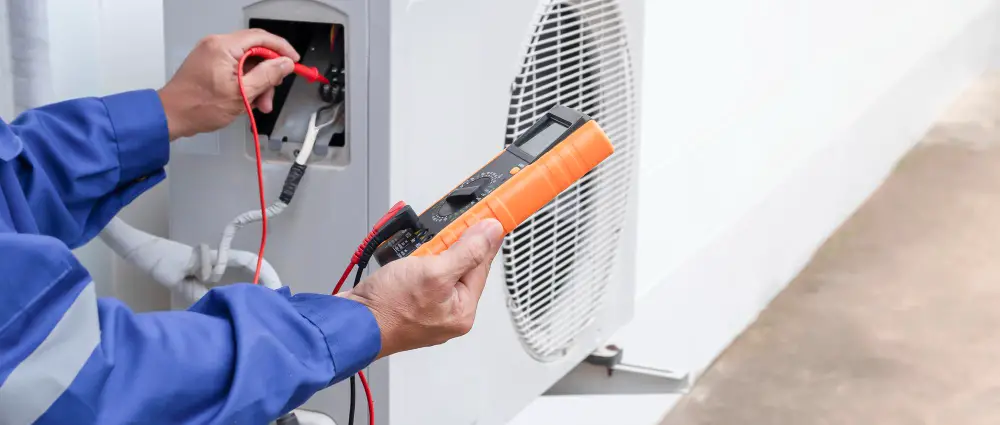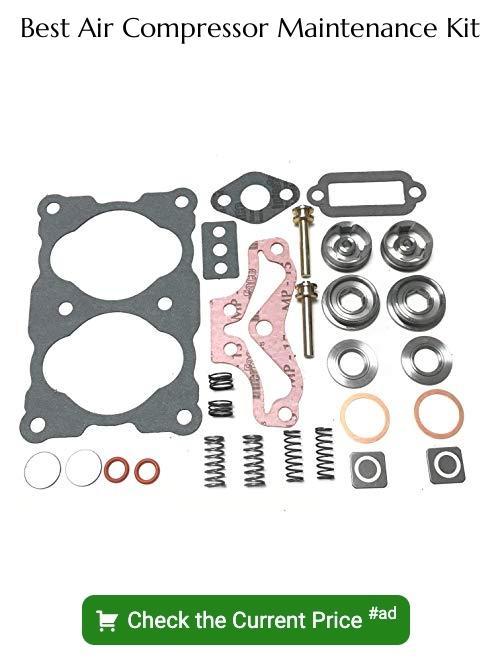Last updated on
Maintaining an air compressor is crucial to ensuring its longevity and efficiency. Like any complex machinery, air compressors can encounter a range of issues that can hinder their performance.
Identifying and resolving these problems promptly is key to avoiding prolonged downtimes and costly repairs. This article serves as a guide to help you understand the common issues faced by air compressors and how to diagnose them effectively before the situation escalated to the point of needing emergency compressor repairs.
From pressure switch malfunctions to unexplained noises, we’ll explore various symptoms and troubleshooting techniques to keep your air compressor running smoothly.
What's Inside
Understanding Your Air Compressor

Before delving into troubleshooting, it’s essential to have a basic understanding of your air compressor’s components and how it operates. If you don’t own an air compressor, you might want to search for “air compressor installation near me”.
An air compressor typically consists of a motor, a compression unit, storage tanks, and control systems. Familiarity with these parts and their functions can greatly aid in diagnosing issues when they arise.
For instance, knowing the role of the pressure switch or the symptoms of a failing motor can quickly point you in the right direction. Additionally, understanding your compressor’s specifications, such as its operating pressure range and capacity, is crucial for effective maintenance and troubleshooting.
Common Air Compressor Issues and Diagnosis
Air compressors can encounter various issues, each with distinct symptoms and causes. Common problems include:
- Air Compressor Pressure Switch Repair: If your compressor struggles to start or stop at the right pressure points, the pressure switch may be faulty.
- High Sump Pressure: This can indicate blockages or malfunctioning valves.
- Strange Noises: Unusual sounds can signify internal wear or damage.
Diagnosing these issues often starts with a visual inspection and listening for any unusual noises during operation. For example, if the compressor is excessively noisy, it could be due to internal wear or a loose component.
High sump pressure issues might require checking for blockages in the system or assessing the condition of valves and seals. Understanding these common problems and their signs will help you quickly identify and address issues with your air compressor.
Addressing Air Pressure Problems

Air pressure issues are among the most common challenges faced by air compressor users. High sump pressure, for instance, can be caused by blockages in the air filter or problems with the intake valves.
Regularly checking and cleaning the air filter can often resolve this issue. Low sump pressure, on the other hand, might be due to air leaks or a worn compressor pump. Inspecting hoses and connections for leaks and ensuring the pump is in good condition are essential steps in troubleshooting this problem.
Additionally, issues like water in compressed air pipes can result from inadequate drainage or a malfunctioning air dryer, requiring prompt attention to the moisture removal systems.
Dealing with Operational Issues
Operational problems such as the compressor failing to start or experiencing high-temperature shutdowns can be particularly challenging. When an air compressor fails to start, it’s essential to check the power supply, fuses, and motor. Sometimes, a simple reset of the overload switch can solve the issue.
For high-temperature shutdowns, cleaning the cooling surfaces and checking the oil levels and quality can be effective. Overheating can often be prevented by ensuring the compressor is in a well-ventilated area and not overloaded. Regular checks for these issues can help maintain optimal performance and prevent unexpected shutdowns.
Handling Leaks and Oil Problems
Oil leaks in an air compressor can lead to significant issues like high oil carryover. Leaks are often found at connection points, gaskets, or seals and can usually be fixed by tightening connections or replacing the faulty components.
High oil carryover, where too much oil is being used in the air compression process, could be due to issues like worn piston rings or excessive oil in the compressor. Regular inspections can help identify these problems early, preventing more severe damage. Implementing a routine maintenance schedule is crucial for detecting and addressing such issues promptly.
Emergency Repairs and Professional Assistance
There are instances when emergency compressor repair becomes necessary, especially when critical issues arise that affect operational safety or efficiency. In such cases, seeking professional assistance is advisable.
For instance, if you’re based in San Antonio, contacting an air compressor repair service in San Antonio would ensure that you receive expert help promptly. Professional technicians have the expertise to diagnose complex issues accurately and perform repairs that might be beyond the scope of routine maintenance.
They can also provide valuable advice on preventing future problems. Remember, while some maintenance tasks can be handled independently, complex or hazardous issues should always be addressed by professionals.
Preventive Maintenance and Regular Checks
Preventive maintenance is the cornerstone of keeping an air compressor in top working condition. Establishing a regular maintenance schedule helps in early detection of potential issues, thereby reducing the likelihood of unexpected breakdowns. This routine should include checks on air filters, oil levels, hoses, and electrical connections.
Regularly draining moisture from tanks and inspecting safety valves are also essential. Keeping a detailed maintenance log can help track the health of your compressor over time. Preventive maintenance not only extends the lifespan of your air compressor but also ensures consistent performance and efficiency.
The Takeaway
Understanding how to maintain and troubleshoot your air compressor is essential for ensuring its longevity and efficient operation. From identifying common issues like pressure switch problems and sump pressure irregularities to handling emergency situations, being well-informed is key.
Regular preventive maintenance and seeking professional help when needed can save both time and money in the long run. By staying proactive in maintaining your air compressor, you can ensure it remains a reliable asset in your toolkit.





